New Prairie KitchenStories and Seasonal Recipes from Chefs, Farmers, and Artisans of the Great Plains

New Prairie Kitchen profiles 25 of the most exciting and groundbreaking chefs, farmers, and producers of artisanal goods from Nebraska, Iowa, South Dakota, and Missouri. Their personal stories are interspersed with more than 50 chef-contributed recipes that range from refreshingly simple to exquisitely gourmet. Organized by season, New Prairie Kitchen will transport you to a revitalized Midwestern heartland where traditional favorites interweave with inspiring new flavors and techniques.
The Great Plains are often maligned as “flyover” country, or perhaps only known as bulk producers of corn, soybeans, beef, and pork. But spend any time in these heartland cities or farms and you’ll quickly discover a burgeoning “good food” movement and top-notch farm-to-fork dining. Nebraska can still grill a mean flat iron steak and Iowa can grow corn as high as an elephant’s eye, but New Prairie Kitchen introduces readers to the phenomenal talent emerging from America’s breadbasket: farms that grow asparagus thick as your thumb and tender as a strawberry; dairies that produce fresh, natural milks and cheeses; and nationally recognized restaurants that make these mouthwatering ingredients into edible art. Pioneering chefs across the prairie have taken an old-meets-new approach to their cuisine, sourcing traditional staples, such as bison and ground cherries, from local sustainable farms, and incorporating them into recipes in new and thrilling ways.
Author Summer Miller, an award-winning journalist and food writer, offers readers an assortment of fascinating and intimate profiles, unearthing the hidden gems of a vibrant culinary scene. You’ll meet James Beard-nominated chefs, such as Clayton Chapman, owner and chef of The Grey Plume (voted America’s Greenest Restaurant), which has been praised by Food and Wine, Cooking Light, and Saveur. You’lll walk the limestone driveway at Dutch Girl Creamery and take a load off inside a mom-and-pop bakery in Hastings, Nebraska.
Beautiful full-color photography and terrific storytelling leads you through a wonderful diversity of cooking styles and recipes sure to appeal to any palate. While regional flavors from the southwest to the Deep South have been mined for years, the hearty and healthy Great Plains style is primed to break out. New Prairie Kitchen will introduce a fresh take on farm-to-table cooking and inspire Americans from coast to coast to try everything “flyover” country has to offer.
 Summer Miller is a freelance food journalist and author whose work has appeared in Grit, SAVEUR, Every Day with Rachel Ray, Edible Omaha, and Edible Feast. She spent the last four years traveling the forgotten Plains of Iowa, Nebraska and South Dakota unearthing stories of local food life and compiling recipes for her first book, New Prairie Kitchen: Stories and Seasonal Recipes from Chefs, Farmers and Artisans of the Great Plains. Oprah Winfrey’s private chef heralded New Prairie Kitchen as “more than a cookbook—it’s a love letter to the heartland.” She lives with her husband and two children in Elkhorn, Neb., where she spends most of her time thinking and writing about food.
Summer Miller is a freelance food journalist and author whose work has appeared in Grit, SAVEUR, Every Day with Rachel Ray, Edible Omaha, and Edible Feast. She spent the last four years traveling the forgotten Plains of Iowa, Nebraska and South Dakota unearthing stories of local food life and compiling recipes for her first book, New Prairie Kitchen: Stories and Seasonal Recipes from Chefs, Farmers and Artisans of the Great Plains. Oprah Winfrey’s private chef heralded New Prairie Kitchen as “more than a cookbook—it’s a love letter to the heartland.” She lives with her husband and two children in Elkhorn, Neb., where she spends most of her time thinking and writing about food.
Portrait by BryceBridges.com
As author Summer Miller points put in the introduction to her book the prairies are often referred to as ‘flyover country’. But after seeing the passionate, creative, and talented people she profiles one realizes that by ‘flying over’ you will be missing a great many wonderful things! Summer Miller recently spoke to us about her book New Prairie Kitchen.
BAF: What’s your definition of the prairie, what geographical area are you talking about in the book?
Summer: I actually Googled it, so I went by how it was defined from the government perspective, which is why we called it New Prairie Kitchen instead of like ‘Midwest’. Because if you look at Midwestern food that’s Chicago. I think Minneapolis or Minnesota falls under that, under the Midwest definition. So I kind of broke it down and it was a risk that we took not knowing if people would know the difference geographically I guess. So when I’m specifically talking about it I’m talking about Nebraska, Iowa. South Dakota, and there are parts of Kansas can be included in that as well.
BAF: What is some of the misconceptions people have about the food there?
Summer: I think the biggest one is that people, especially in Omaha because of the livestock and the meat packing industry that was here especially in the 60’s and 70’s, that created this steakhouse restaurant atmosphere and they were known for being great wonderful steakhouses but those were older restaurant families and that was an image that just kind of prevailed and that has changed over time. A lot of those restaurants have closed and they’re not there anymore and while it would be hard for you to go to a restaurant in Nebraska and not find a good steak, that’s not what’s pushing the food movement forward here anymore.
I think that’s probably the biggest misconception is that we’re just meat and potatoes and that’s just not the case. We’ve definitely gotten more adventurous we’ve connected deeper with prairie foods like Jerusalem artichokes for instance and things like that. I think that it’s just reconnecting and broadening the scope and then letting other people know that. I think we’ve known it for a long time but I don’t know that we’ve let people from the outside into our little secret.
BAF: So the definition of ‘new prairie’ would be?
Summer: A modern evolution of food here…while it’s artful it’s still pretty humble. I want to say rustic but it’s not, you wouldn’t look at anything that The Grape Room does and call it rustic but I think there’s still a value to that. I think that we value fine dining like The Grape Room and The Boiler Room as much as we value what can come out of a mom and pop kitchen and as far as calling it New Prairie Kitchen it was just an idea of acknowledging. I wrote about that in the introduction of where we’ve come and the evolution from this old steakhouse identity into really modern, a modern food revolution. Where we’re looking at all aspects of it and we are creating really beautiful, humble, complex, gorgeous meals out of it.
BAF: You’ve got some great people, and great restaurants in this book. How did you find them?
Summer: I do food journalism. I write for magazines and so I was kind of covering these restaurants and these chefs and these farmers for magazines anyway and then I was just doing other things. I guess that’s when between all of them and I wanted to put it together and the way as far as formatting the book was concerned initially I had tried to vet all the farmers and do it independently and that was just too much for one person to take on so when the book really started to come together I decided on asking the chefs to contribute the recipes, and my requirement with them was that they had to use at least one local producer. They did that. Some people kind of criticized that ‘why not insist that everything was local?’ And the truth is that in a smaller community where perhaps the local food scene is just starting to gain momentum one restaurant using one person is that beginning seed so to make that really explode and I felt like that was critically important. I didn’t want to ostracize somebody because they were at the beginning of the journey instead of the end. To answer your question though the chefs, the requirement was that they had to use at least one local producer and then based on who the chef used I went out to those farms. That was kind of my trail.
BAF: That’s a great idea, that they used one ingredient, like you said not to leave anybody out.
Summer: Well and some use many more obviously The Great Bloom uses tons and there’s even like in Hastings Nebraska where they use a lot but even in some places it’s a lot more casual, it’s just their neighbor who has some beehives, so they get their honey from them and it’s not really a commercial enterprise. I didn’t want take away from the value of that either.
BAF: The photographs are really beautiful really capture the essence of everything.
Summer: Dana’s a talented photographer, we’re really lucky to have her here because she’s Omaha based as well.
I think she has an amazing eye for light, I mean we were on some really remarkable, very long long trips because you know your shooting the farms and all the outside work at dusk and at dawn so you’re getting there pre dawn so you’re there at nautical dawn so you can be there right when the light is starting to crest and at certain times and we would shoot the farms really early in the morning and then go and photograph food or restaurants and chefs or inside shots and then go back to farms at dusk usually by that time we were 4 or 5 hours away from home. We would be leaving by 4 in the morning and have 7 or 8 stops and then returning back home by midnight. They were pretty interesting trips.
BAF: You really started this book on speck.
Summer: I didn’t have a commitment from anyone. It was me thinking this was a good idea and writing it as I went and then sending out submissions and getting rejected and sending out submissions and getting rejected and then finally, finally I ended up having a couple publishers in the end that were interested and then we got a contract but that wasn’t until the book was almost completely finished. I think we may have shot 1 or 2 farms after that but that was it. I had written almost the entire thing without knowing if it was ever going to be published.
BAF: It must have been a little scary but it just shows it was real labor of love.
Summer: It was terrifying. It was a labor of love. I just really felt like it was relevant. I’ve always lived here but I’ve traveled extensively throughout my life for months at a time and so I knew what was happening in other parts of the world and I felt like the Midwest and the Great Plains specifically were often dismissed. Perhaps there was a time where that was justified but that wasn’t the case anymore.
Because I’d written about these chefs and I saw what these farmers were doing and the efforts that people were making in their own kitchens. I just really wanted to bring that to the forefront and so it became a real passion of mine to tell their stories. I really fell in love with them with all of them, the chefs, the farmers, their approaches, why they do what they do because it’s hard work. I think we’re in a culture where it’s glamorized, but that doesn’t change that fact that it’s a lot of grit in a restaurant industry or in a farm and many of them are struggling and I wrote about that too. I try not to romanticize it too much.
BAF: It is an area of the country that is so connected to agriculture.
Summer: Well I think that’s part of it too, you don’t go very far in this area, in the great plains, where somebody doesn’t have a garden you know even young people have their own backyard gardens or you know their Grandma or their Mother definitely has a garden, an Uncle on a farm somewhere too. You’re not that far removed even if you live in an urban area from agriculture. Now what kind of agriculture is different it’s probably commodities, farming or big, big ranches and things like that, it’s kind of a different philosophy but you still inevitably have a garden.
BAF: Since you started are things still changing? Are new people still coming up with new things? How is that evolving?
Summer:Absolutely, I think that when I started the white tablecloth restaurants that were doing especially in the more urban area like Omaha, Des Moines. It was a lot of fine dining, white tablecloths and I think that was just a price point issue, but since then many, many, many more casual dining and even quick dining local food restaurants have opened like we have one in town called Over Easy and they’re a breakfast, lunch, very casual food they even have a drive through. So you can go through and pick up local food drive through!
Yes, there’s definitely been an evolution just in the last few years. Even though the book took me 4 1/2 years to finish I still knew who I was including in it 4 years ago. All of those new places that popped up in that time period, there’s absolutely room to write a second or third book for all the different places. A lot more ethnic cuisine from the local perspective as well I would say.
BAF: How did you get your start or what was your inspiration?
Summer: That’s such a great question. I’m not a professionally trained chef or anything like that but my Grandparents gardened and my Mom and Dad gardened a huge, huge garden so I think from a very young age I just understood that and embraced it. I’ve never in my life not lived somewhere with a garden, even if I had a sun porch I did container gardening, when I was in my 20’s and in college and so I figured that was a huge influence on me. I’m looking out my window right now, we’re in the middle of September and I’m looking at Swiss Chard and 5 different kinds of tomatoes in my garden right outside and some poorly neglected beets.
I think that that is a huge influence but cooking wasn’t that important, I grew up in a big family, we didn’t have a ton of money it was really just about sustenance, like let’s get some spaghetti on the table. Tomorrow night we’ll throw sausages on it, it wasn’t really even that good. I mean my Mother’s very great at a lot of things but cooking’s not her forte.
I think in many ways that shift 13 years ago for me started my move to the smaller community and it really wasn’t more convenient to run into town to get something if you forgot it, you had to figure it out. It was just more convenient to have it on hand that’s kind of where it evolves and then from a personal level cooking has always been a very peaceful thing for me and a very creative enterprise I guess, which is certainly romantic considering the way it works if you’re on a line in a kitchen, right, in a in a professional kitchen.
I think it’s always been very soothing for me to be able to make something from what I have on hand, I think I’m a utilitarian good old Nebraska girl in the sense that I need to be resourceful, I think there’s a value to some there that’s just part of my upbringing, that plays a hand in it and then I’ve always written about food as a side kind of hobby, including agriculture like gardening and things like that. To my other work back in the day, but I didn’t take it seriously until after I had a family.
BAF: If you had to quickly sum it up, what would you tell people about ‘prairie food’
Summer: My elevator speech about prairie food?
Here’s what it is and this is going to sound trite and I don’t mean for it to but just that we value it. The reason why I say that is that I think that, and I wrote about it in the introduction, is that the people here tend to be pretty humble the idea of bragging is frowned upon and so I think because of that a lot of talent is hidden, I think that’s one of my favorite parts of having written a book about this in the first place is that I get to go out and do the bragging for them.
These aren’t my recipes. These aren’t my stories. They’re the stories of the people. I can go out and say look at the great stuff that they’re doing, look at what’s happening. Then I think that by way of doing that other people will recognize it cause if you don’t recognize the value yourself then it’s hard to get other people to do that as well.
BAF: What’s next for you, what’s in the works?
Summer: Gosh I’m wondering when I’m going to get to stand still long enough to notice, it’s been really busy. I go out on tour again here next week I don’t know I think that I would like to write a second one similar to this, to what you were saying earlier, to what I was saying earlier. There’s so many different places that have opened up that shift into casual dining I think its fascinating and I also personally just prefer casual dining. You know I’m a home cook I really value the more kind of country eating I guess and more not treating food to be to explore that a little bit more. I think I’ll get through the holiday season with this book and then try to take a breather and figure out what to do next.
Copyright 2015 Booksaboutfood.com
“A testament to the taste of place in all the best ways possible — these recipes, stories, and profiles of chefs, farmers, and artisans are all abundantly steeped in the particularcharacter of our country’s prairie region. This beautifully written and photographed book hits all the perfect notes for anyone interested in regional cuisines, no matter where they live.” -Tracey Ryder, Co-Founder of Edible Communities, Inc.
“Summer has given us such a gift with her book New Prairie Kitchen: The beautiful prose, touching stories of the Great Plains, and incredible photography are reward enough. Then come the recipes. Mouthwatering, interesting, soul quenching dishes that are sure to become favorites in every kitchen. This is more than a cookbook—it’s a love letter to the heartland.” -Taryn Huebner, Private Chef for Oprah Winfrey
“New Prairie Kitchen will take you on a captivating journey across the oft-overlooked Great Plains and leave you inspired. By pairing intimate glimpses into the lives of small local farmers, chefs and artisans with their treasured recipes, Summer Miller has captured the spirit of local food and the essence of good food.” -Amy S. Brown, copublisher and editor of Edible Omaha
“Be prepared for spectacular photos that leap off the page, interesting profiles of people who grow, cook, and prepare local foods, and four seasons of wondrous recipes createdto entice your taste buds. Summer Miller has written a delightful cookbook that might double as a coffee table book, if, that is, you let it out of your kitchen.” -Jean Teller, GRIT magazine
“In this beautiful book, Summer Miller introduces readers to the food artisans, chefs, and farmers who make the Great Plains great. Full of seasonal, modern recipes, this is the book to tuck under your arm on every visit to the farmer’s market.” -Ivy Manning, author of The Farm To Table Cookbook, and Williams Sonoma Weeknight
Sweet-Corn Chowder with Bacon and Sweet-Corn Salsa
SERVES 6 (1 ½ CUPS CHOWDER AND 3 TABLESPOONS SALSA PER PERSON)
One of my proudest moments as a chef was being asked to participate in a Niman Ranch Farmer Appreciation Dinner in Iowa. I paired bacon with sweet corn to make this luscious summer chowder. I served it hot, but it can be enjoyed at room temperature or cold just as easily. —George Formaro CENTRO | DES MOINES, IA
SWEET-CORN SALSA
1 fresh poblano chile
2 large ears fresh sweet corn, kernels cut from the cob
1 large heirloom tomato (about ½ pound), seeded and chopped
3 tablespoons olive oil
2 tablespoons chopped red onion
2 tablespoons chopped fresh cilantro
2 teaspoons kosher salt
2 cloves garlic, minced
1 teaspoon red wine vinegar
½ teaspoon freshly ground black pepper
½ jalapeño chile, seeds and membrane removed, chopped
SWEET-CORN CHOWDER
4 cups chicken stock or vegetable stock
8 large ears sweet corn, kernels cut from cob (about 5 ½ cups)
1 small yellow onion, chopped (about ½ cup)
1 large clove garlic, chopped
2 sprigs fresh thyme
1 ½ cups heavy cream
5 tablespoons cornstarch
5 tablespoons cold water
Kosher salt and ground white pepper, to taste
10 slices bacon, cooked crisp and crumbled
WHERE TO FIND…
Sweet Corn
Grimes Sweet Corn
Granger, IA
Tomato
Cleverley Farms
Mingo, IA
Bacon
Niman Ranch
IA
TO MAKE THE SALSA
Preheat the broiler.
Place the poblano on a baking sheet and roast under the broiler for about 15 to 20 minutes. Using a pair of tongs, rotate the chile once the skin starts to blacken, about every 5 minutes. Remove from the oven, transfer to a bowl, cover with a dishtowel, and set aside to cool.
In a medium bowl, add the corn kernels, tomato, olive oil, onion, cilantro, salt, garlic, vinegar, black pepper, and jalapeño.
Once the poblano is cool to the touch, the blistered and blackened skin should pull off easily. Remove and discard the skin, seeds, and stem. Chop the poblano and add it to the bowl with the corn mixture. Stir, then refrigerate for 1 hour before serving.
TO MAKE THE CHOWDER
In a Dutch oven, bring the stock to a simmer over medium heat. Add the corn, onion, garlic, and thyme. Reduce the heat to low, cover, and simmer for 30 minutes.
Remove and discard the thyme. Purée approximately ½ of the chowder using an immersion blender, or in batches if using a blender, returning the puréed portion to the Dutch oven. Add the cream and bring the chowder to a simmer over low heat.
Mix the cornstarch and cold water together in a small cup, then add this mixture to the chowder while it is simmering. Stir to thicken. Season to taste with the salt and white pepper.
To serve, divide the chowder among bowls. Top each bowl with some of the corn salsa and crumbled bacon.
Note: Hot chilies like jalapeños and poblanos have oils that can remain on the skin even after washing. To prevent irritation, wear gloves or put a plastic bag over whichever hand is holding the chile.
Reprinted with permission from New Prairie Kitchen by Summer Miller, Agate Midway, 2015


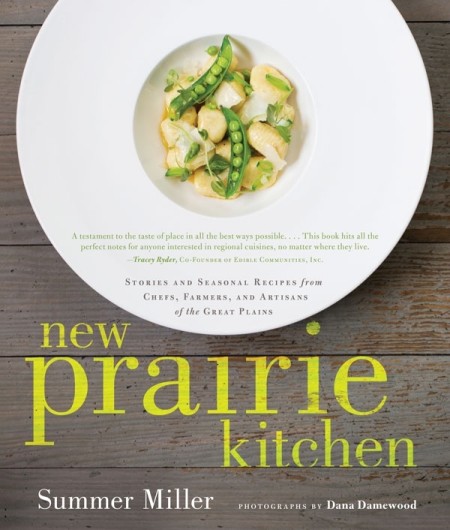


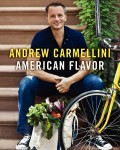
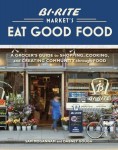
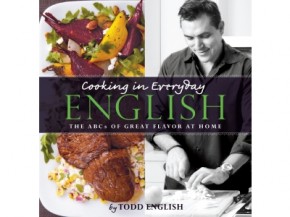
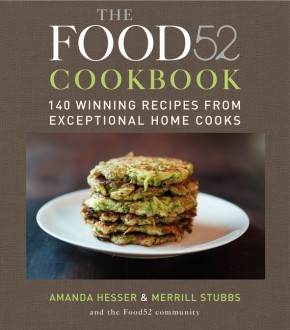
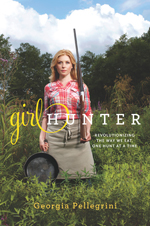
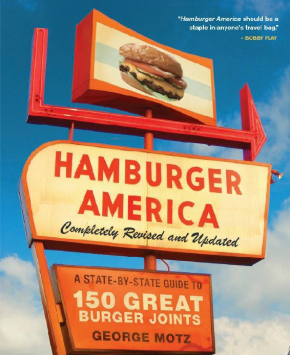
Leave a Reply